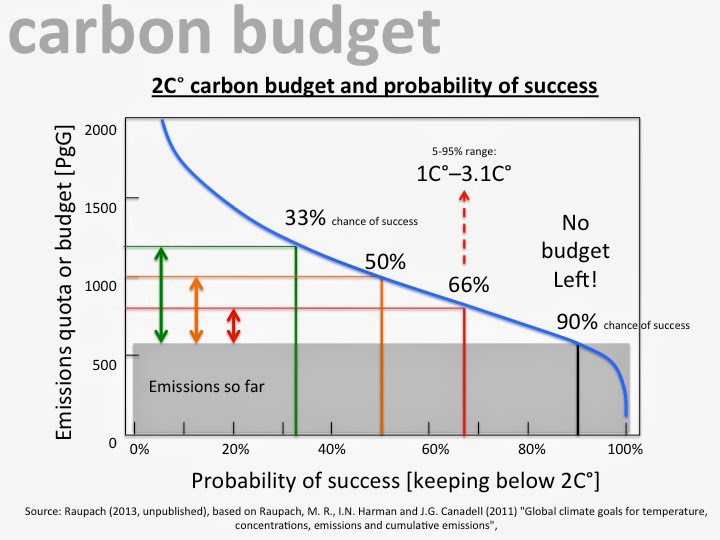Global carbon budget reassessed downwards, but do we really have a safe carbon budget?

Research on carbon budgets by Joeri Rogelj et al (2016) - Differences between carbon budget estimates unravelled (abstract) published in Nature Climate Change, warns that the global carbon budget has been over-estimated.
"For a >66% chance of limiting warming below the internationally agreed temperature limit of 2 °C relative to pre-industrial levels, the most appropriate carbon budget estimate is 590–1,240 GtCO2 from 2015 onwards. Variations within this range depend on the probability of staying below 2 °C and on end-of-century non-CO2 warming. Current CO2 emissions are about 40 GtCO2 yr−1, and global CO2 emissions thus have to be reduced urgently to keep within a 2 °C-compatible budget." the study abstract concludes.
This carbon budget estimate is half of the previous range of from 590 billion to 2.4 trillion tonnes of CO2. Our carbon dioxide emissions are about 40 billion tonnes in 2015. The carbon budget would be spent in about 15 to 30 years for the 2 degrees C target.
“We have figured out that this budget is at the low end of what studies indicated before,” said lead author Dr Joeri Rogelj, a climate scientist at the International Institute for Applied Systems Analysis in Austria. "If we don’t start reducing our emissions immediately, we will blow it in a few decades."
For a 1.5°C target, the carbon budget "would be exhausted in about one decade," Dr Rogelj told AFP, according to Phys.org.
"It is beyond doubt that ambition thus needs to be increased radically from anything we have experienced to stabilise warming at either 1.5°C or 2.0°C, or even higher temperature levels,"
The study looked at reasons why past research may have over-estimated the carbon budget. While Carbon dioxide accounts for more than 80 percent of global warming, other gases such as methane and nitrous oxide are also key. The researchers concluded that many of those previous studies neglected some of the warming effects from those other greenhouse gases.
"In our proposed carbon budget range, we take into account warming by all human emissions, and thus shave of the top-end of studies that looked at CO2 only." said Rogelj.
The only good news is that CO2 Emissions Stabilized in 2014, according to the International Energy Agency. They reported in March 2015 that "Global emissions of carbon dioxide stood at 32.3 billion tonnes in 2014, unchanged from the preceding year."
This is important as it is the first time emissions have stabilised during a period of global economic growth. But it is still far from sufficient if we are to decarbonize by mid-century.
Australian Climate activist and author David Spratt reckons that with a 90 per cent chance of keeping below 2 degrees C of global warming we have already used up the carbon budget. See the graph above To read his explanation see: No carbon budget left to burn from July 2014.
He argues that most carbon budgets don't factor in that agriculture and deforestation will continue to have emissions, even after we succeed in decarbonizing our electricity sector. Also climate feedbacks such as carbon released from permafrost or ocean clathrates have not been included. Reduction in cooling from human caused particulates and aerosols when we reduce carbon emissions also needs to be factored in.
And we have aviation emissions which continue to grow and may blow any hope of achieving the 2 degree ParisAgreement target.
Get Involved
If you'd like to help with maintaining or developing the website, contact us.
Publish
Publish your stories and upcoming events on Indybay.


